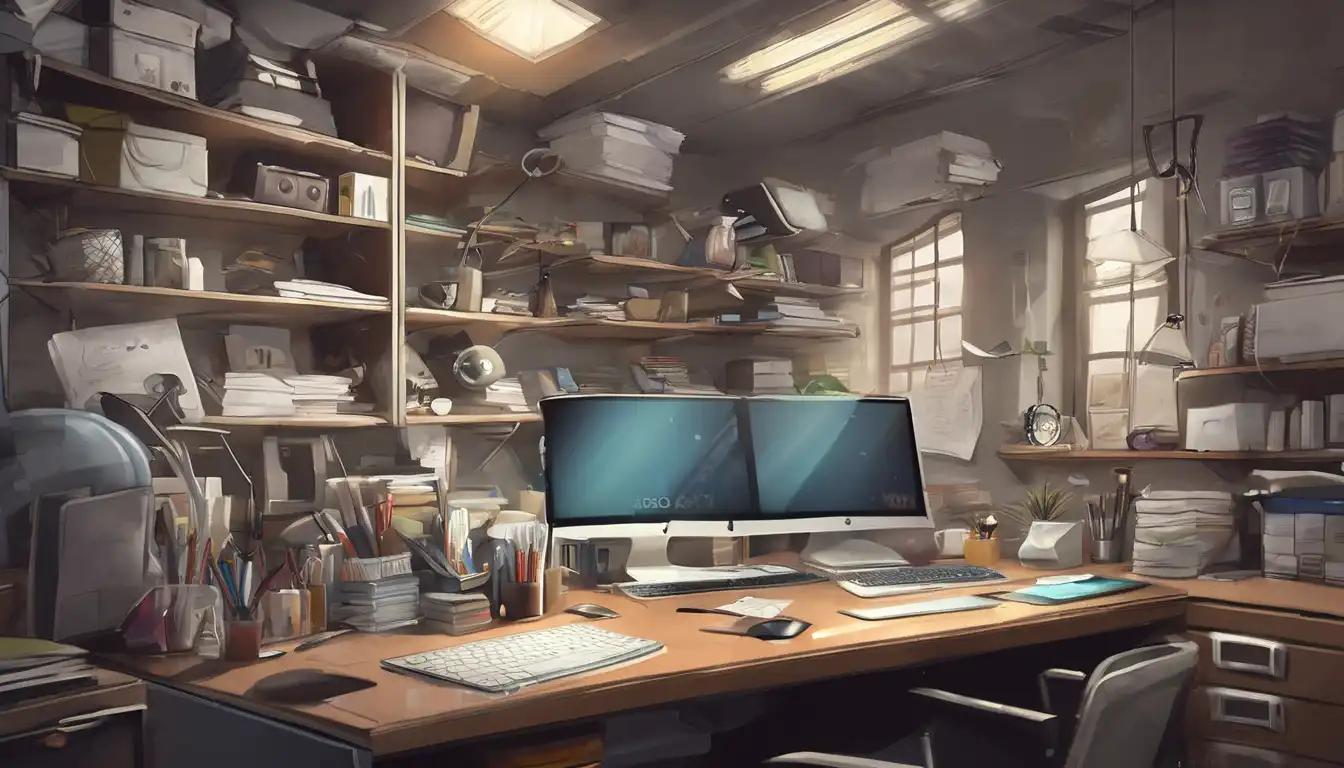Why Your Workspace Matters More Than You Think
Your physical environment plays a crucial role in your ability to concentrate and maintain productivity. Research from the Journal of Environmental Psychology shows that organized workspaces can improve focus by up to 32% compared to cluttered environments. Whether you work from home or in a traditional office, creating an intentional workspace setup can dramatically impact your mental clarity and work output.
The Psychology Behind Workspace Organization
Clutter isn't just a physical problem—it's a cognitive one. When your environment is disorganized, your brain has to work harder to filter out distractions, leaving less mental energy for the tasks that matter. Studies indicate that visual clutter competes for your attention, making it harder to concentrate on important work. By organizing your workspace, you're essentially creating a environment that supports rather than hinders your cognitive processes.
The Impact on Mental Energy
Every item in your field of vision represents a potential distraction. A clean, organized workspace reduces cognitive load, allowing you to direct your full attention to your work. This is particularly important for tasks requiring deep focus, where even minor distractions can significantly impact performance.
7 Essential Steps to Organize Your Workspace
1. Start with a Complete Reset
Begin by clearing everything from your desk surface. This blank slate approach allows you to be intentional about what returns to your workspace. Ask yourself: "Does this item serve a purpose in my daily work?" If not, find it a new home outside your immediate work area.
2. Implement the Zones Method
Divide your workspace into functional zones: a primary work zone for your computer and essential tools, a reference zone for frequently used documents, and a supply zone for stationery and other materials. This spatial organization helps create mental boundaries between different types of work.
3. Optimize Your Digital Environment
Physical clutter is only half the battle. Organize your computer desktop, clear browser tabs, and implement a logical file structure. Consider using productivity tools like digital task managers to keep your digital workspace as organized as your physical one.
4. Master Cable Management
Tangled cables create visual chaos and can be a source of frustration. Use cable organizers, clips, or sleeves to keep cords tidy and out of sight. This small change can make a significant difference in how clean your workspace feels.
5. Create an Inspiration Corner
Dedicate a small area for items that inspire you or boost your mood—whether it's a plant, family photo, or meaningful artwork. This personal touch can make your workspace more enjoyable without contributing to clutter.
6. Implement the One-Touch Rule
Handle items only once. When you pick something up, decide immediately whether to keep it in your workspace, file it elsewhere, or discard it. This prevents paper and miscellaneous items from accumulating on your desk.
7. Establish Daily Reset Rituals
Spend the last 5-10 minutes of each workday tidying your workspace. This ensures you start each morning with a clean slate, setting a positive tone for the day ahead. For more on establishing effective work routines, check out our guide on building productive habits.
Essential Tools for Workspace Organization
Physical Organization Solutions
Invest in quality organizational tools that match your workflow. Consider drawer organizers, desk trays, vertical file holders, and labeled containers. The right tools can make maintenance effortless and intuitive.
Digital Organization Apps
Leverage technology to keep your digital workspace organized. Apps like Notion for note-taking, Trello for project management, and CleanMyMac for desktop organization can streamline your digital environment. Discover more about effective digital tools in our comprehensive review.
Maintaining Your Organized Workspace
Organization isn't a one-time project—it's an ongoing practice. Schedule weekly check-ins to assess what's working and what needs adjustment. Be willing to adapt your system as your work needs evolve. Remember that the goal isn't perfection, but functionality.
The 5-Minute Daily Tidy
Make quick tidying part of your routine. Whether it's after lunch or before logging off for the day, these small consistent efforts prevent clutter from accumulating and becoming overwhelming.
The Connection Between Workspace and Mental Clarity
An organized workspace does more than just look nice—it creates psychological conditions conducive to deep work. When your environment is orderly, your mind can more easily enter a state of flow. This connection between external order and internal focus is well-documented in productivity research.
Reducing Decision Fatigue
Every time you search for a misplaced item or navigate around clutter, you're using mental energy that could be directed toward your work. An organized space reduces these minor decisions, preserving your cognitive resources for important tasks.
Common Workspace Organization Mistakes to Avoid
Many people make the mistake of over-organizing or creating systems that are too complex to maintain. The most effective organizational systems are simple, intuitive, and aligned with how you actually work. Avoid these common pitfalls:
- Creating systems that require more maintenance than they save
- Organizing for aesthetics rather than functionality
- Failing to account for your actual work habits
- Not leaving room for flexibility and adaptation
Measuring the Impact on Your Productivity
After implementing these changes, track your focus levels and productivity. You might notice that tasks take less time, you experience fewer distractions, or you're able to maintain concentration for longer periods. These tangible benefits reinforce the value of maintaining an organized workspace.
Remember that workspace organization is a personal journey. What works for one person may not work for another. The key is to experiment, observe what helps you focus best, and continuously refine your approach. For more insights on optimizing your work environment, explore our resources on creating the perfect home office.
By taking control of your physical environment, you're not just organizing space—you're creating conditions that support your best work. Start with small changes today, and watch as your focus and productivity transform alongside your workspace.
